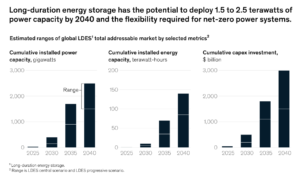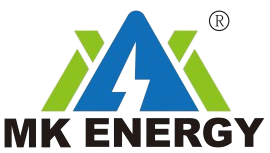In today’s society, the lithium battery energy storage market is becoming more and more important, and its market demand continues to grow, and the related long-term energy storage requirements are also constantly changing with environmental and energy policies. The development of new battery technologies is also changing the market structure, such as sodium-ion batteries, zinc-air batteries, and flow batteries. How the future of lithium batteries will develop is always an eternal proposition that we need to think about.
Under the background of the development of new energy, the trillion-level energy storage track presents a thriving scene. Complying with the call of “Double Carbon”, the energy transformation continues to advance, and the new energy storage industry ushers in explosive development opportunities. It is estimated that by 2025, the market size will exceed one trillion yuan. Among the new energy storage routes, lithium-ion batteries are occupying the “dominant” position. According to data from the National Energy Administration, in 2022, lithium-ion battery energy storage will account for 94.5% of new energy storage installed capacity. In the face of huge market inertia, almost all new entrants have taken the more mature “lithium battery” technology route as their first choice when preparing to enter the “energy storage track”.
Long-term energy storage needs
At the 13th China International Energy Storage Conference held in Hangzhou, Dr. Zheng Hua, associate professor of the School of Electrical and Electronic Engineering, North China Electric Power University, put forward his opinion: With the increasing demand for power transfer in the power market, the demand for long-term energy storage is ushering in an explosion.
What is long-term energy storage?
In 2021, the U.S. Department of Energy’s report on long-term energy storage mentioned that long-term energy storage is defined as at least 10 hours of continuous operation (discharge) and a service life of 15 to 20 years. In the process of accelerated integration of new energy into the grid, due to the instability of its output, higher requirements are placed on the capacity of the grid. In order to better cope with day-to-day fluctuations and balance the energy gap between quarters, the demand for long-term energy storage has exploded.
Market development space
In the global market, McKinsey modeling research shows that by 2040, the long-term energy storage industry may deploy 85-140TW/H of energy storage capacity, and the total power consumption of this energy storage may reach the total global power consumption 10% of the amount. These mean that the development space for long-term energy storage is huge.

More battery technology
The resource problem has become one of the constraints for the development of long-term energy storage of lithium batteries. Public information shows that the total distribution of lithium resources is limited, and all of them can be mined to meet the demand of 100TWh. The vanadium flow route in the flow battery route also has a huge resource reserve gap. According to Zheng Xiaohao, the mining of vanadium resources in the world is still not enough for the capacity of 50TWh.
Zheng Xiaohao pointed out that the market urgently needs to find more technical routes for other resources, from lithium-ion batteries to sodium-ion batteries, vanadium flow flow batteries to zinc-iron/iron-chromium batteries, and to develop more battery technology routes. And topics that everyone in the industry should think about.

